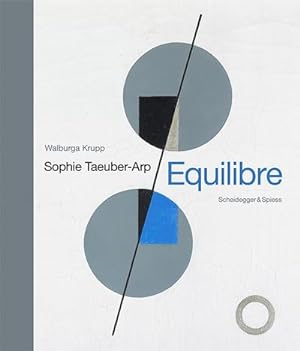scheidegger spiess mär 2020 (2 Ergebnisse)
FeedbackSuchfilter
Produktart
- Alle Product Types
- Bücher (2)
- Magazine & Zeitschriften (Keine weiteren Ergebnisse entsprechen dieser Verfeinerung)
- Comics (Keine weiteren Ergebnisse entsprechen dieser Verfeinerung)
- Noten (Keine weiteren Ergebnisse entsprechen dieser Verfeinerung)
- Kunst, Grafik & Poster (Keine weiteren Ergebnisse entsprechen dieser Verfeinerung)
- Fotografien (Keine weiteren Ergebnisse entsprechen dieser Verfeinerung)
- Karten (Keine weiteren Ergebnisse entsprechen dieser Verfeinerung)
- Manuskripte & Papierantiquitäten (Keine weiteren Ergebnisse entsprechen dieser Verfeinerung)
Einband
- alle Einbände
- Hardcover (1)
- Softcover (Keine weiteren Ergebnisse entsprechen dieser Verfeinerung)
Weitere Eigenschaften
- Erstausgabe (Keine weiteren Ergebnisse entsprechen dieser Verfeinerung)
- Signiert (Keine weiteren Ergebnisse entsprechen dieser Verfeinerung)
- Schutzumschlag (Keine weiteren Ergebnisse entsprechen dieser Verfeinerung)
- Angebotsfoto (2)
Sprache (2)
Preis
- Beliebiger Preis
- Weniger als EUR 20 (Keine weiteren Ergebnisse entsprechen dieser Verfeinerung)
- EUR 20 bis EUR 40
- Mehr als EUR 40 (Keine weiteren Ergebnisse entsprechen dieser Verfeinerung)
Gratisversand
Land des Verkäufers
Verkäuferbewertung
-
Sophie Taeuber-Arp - Equilibre : Schlüsselwerke der Schweizer Kunst
Verlag: Scheidegger & Spiess Mär 2020, 2020
ISBN 10: 3858816620 ISBN 13: 9783858816627
Sprache: Englisch
Anbieter: AHA-BUCH GmbH, Einbeck, Deutschland
EUR 29,00
Währung umrechnenKostenlos für den Versand innerhalb von/der DeutschlandAnzahl: 2 verfügbar
In den WarenkorbBuch. Zustand: Neu. Neuware - Swiss artist Sophie Taeuber-Arp (1889-1943) was a pioneer of 20th-century avant-garde. Remarkably versatile and immensely gifted, she produced an oeuvre that encompasses the entire range of the modernist movement from applied and fine art and dance to architecture, interior design, and teaching.Equlibre, created in 1931, marks the beginning of Taeuber-Arp's career as an accomplished painter. She moves away from figuration to focus on shape and color. Circle, square, and rectangle define her future vocabulary. While in her earlier textiles she used multiple shades and hues, she now reduces her palette to primary colors alongside black and white, signaling a markedly changed sense of color. The painting's posthumous title emphasizes Taeuber-Arp's constant striving for an ideal balance of color, shape, and indeed all the elements in her paintings. From here, she sets out to explore movement, circles, and spaces, and later gradations and lines. Equilibre, a landmark of Taeuber-Arp's oeuvre, looks ahead to her future subject matter, while at the same time referencing her earlier work.
-
Franz Gertsch - Rüschegg : Schlüsselwerke der Schweizer Kunst
Verlag: Scheidegger & Spiess Mär 2020, 2020
ISBN 10: 3858816639 ISBN 13: 9783858816634
Anbieter: AHA-BUCH GmbH, Einbeck, Deutschland
EUR 29,00
Währung umrechnenKostenlos für den Versand innerhalb von/der DeutschlandAnzahl: 2 verfügbar
In den WarenkorbBuch. Zustand: Neu. Neuware - Swiss artist Franz Gertsch, born 1930, is one of the most important exponents of photorealism worldwide. Yet unlike many of his fellow artists, he takes liberties when translating a photograph into one of his large-format paintings or prints, thus animating his depictions of human faces or landscapes. Rüschegg, created in 1988, represents a landmark in Gertsch's oeuvre. It is both his first attempt in woodcut for a landscape, and his first large-format work in that genre. Abandoning painting for nearly a decade as of 1986, he developed a special woodcut technique. Having worked in portraiture almost exclusively for many years, Gertsch now begins his exploration of nature. Starting from a view of his garden in the Swiss village of Rüschegg, Gertsch singles out some of its elements, such as a footpath, rocks, shrubs and trees, grass and leaves, taking them as individual motifs first for woodcuts and later for monumental 'portraits' of such pieces of nature. Thus, Rüschegg also stands for Gertsch's movement away from the representation of humans to that of nature, just as it links his later work with the landscape studies of his early years.



